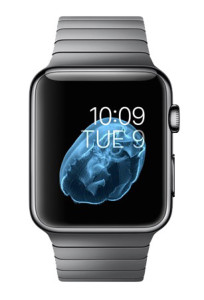Every single innovation is both good and bad – that’s just the nature of progress. Part of that is up to us and how we use said innovation. For example, the Apple watch… could be a tool for good, to help you lose weight, be healthier, be more productive… or it could be a tool for bad – by tracking someone unlawfully.

What is the Google Buy Button?
According to Mariella Moon at Engadget, “You’ll see those buttons accompanying sponsored results under a “Shop on Google” heading — they won’t be used for non-sponsored links returned by the algorithm — when you search for products on mobile devices. Upon clicking one, a separate product page will load where you can pick sizes, colors and ultimately complete your purchase. Any product you buy will still come straight from retailers, the WSJ says, so it doesn’t sound like Google’s stocking up warehouses with goods like Amazon does.”
In case you missed that – it’s a button that someone can click while on Google’s mobile search results. It then opens a new page with your branding and then allows them to purchase from your store with saved payment information.
That doesn’t sound too bad. In fact – it sounds a lot like Amazon and eBay. What’s even better, is that unlike Amazon or eBay – Google won’t take a straight percentage of the sales. Instead it will operate on more of a PPC (pay-per-click) model.
What should I watch out for?
The thing that has many retailers scared though, is that the customer never actually visits your website. They’re worried that they will essentially just become an order fulfillment center – with almost no attachment to the customer.
Google will apparently still “give shoppers the choice to subscribe to [the retailer’s] marketing programs” according to Engadget.
But that’s not the same as actually interacting with your brand. You can’t retarget people that looked at your products on Google the way you could if they had viewed those products on your website.
In the competitive world of ecommerce, your relationship with your customers is the biggest differentiator, and having a large chunk of that relationship placed at a distance of googol meters wide (see what I did there), can put a strain on that relationship.
So is it good or is it bad?
I guess that’s still up for debate. If you’re a huge retailer, this is probably bad. You just lost a position or two in your customer’s mind. But, if your brand isn’t exactly a household name yet, then it’s probably a good thing.
Chances are, your mobile site isn’t all that optimized so now you will actually get more mobile sales than you were before. Plus, there’s the chance for increased exposure to your brand.
The setup doesn’t sound all that dissimilar to Comparison Search Engines (CSEs), like PriceGrabber, Shopping.com, or even Amazon or eBay. It allows us smaller brands a chance to get our name in front of customers we wouldn’t otherwise be finding – and that branding then encourages them to search for us by name.
If this scares you, then you need to figure out how to keep your customers after the sale. Making the sale is only half of the battle – how do you “wow” them and keep them coming back?
Do you offer outstanding customer service the way we do at DollarHobbyz? We realized that having the lowest prices wasn’t enough, we wanted our customers to be blown away with the care we put into every detail of our service to them so they will tell all of their friends about us – and keep coming back.
If you’re afraid of new technology, then you need to get over it quickly because these buy buttons could start showing up any day (they may already be showing up by the time this article goes live). And it’s not just Google getting into the game – Shopify, Facebook, and Instagram are among the new adopters releasing their own “buy” button. Things are heating up – but it’s up to you to determine if it’s good or bad for your site.
Have your own thoughts on the Google Buy Button? Share them in the comments!


